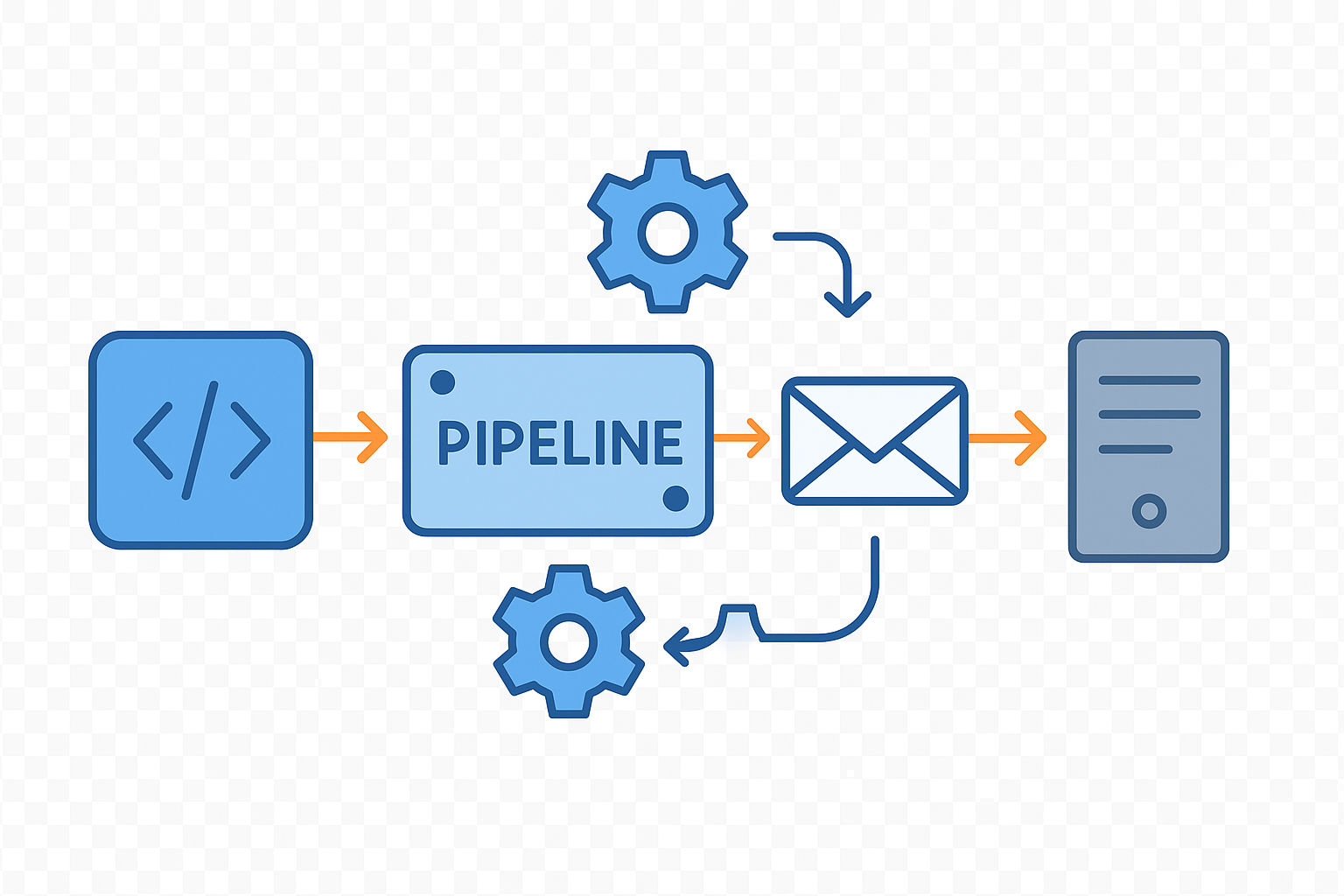In high-velocity development environments, efficiency and security are paramount. Integrating temporary email addresses directly into your DevOps CI/CD pipeline can streamline testing, improve reliability, and safeguard your primary inbox from clutter and potential breaches. Here’s how teams can seamlessly incorporate disposable email into their automated workflows.
1. Why Temporary Email in DevOps?
Traditional testing often relies on shared test accounts or manual setup, which can lead to:
Environment Pollution: Stale or reused addresses causing inconsistent test results.
Data Leakage: Sensitive test data mixing with production systems.
Manual Overhead: Time spent creating, rotating, and cleaning up test mailboxes.
By automating disposable email generation and handling, you ensure a fresh, isolated test environment for every build—eliminating human error and boosting pipeline integrity.
2. Key Integration Steps
a. Provisioning Addresses Automatically
Use EyadMail.online’s REST API to generate addresses at the start of your CI/CD jobs:
bash# Generate a new temporary email with a 2-hour lifespancurl -X POST "https://api.eyadtmail.online/v1/addresses" \ -H "Authorization: Bearer $EYADMAIL_API_KEY" \ -H "Content-Type: application/json" \ -d '{"lifetime":7200}'
Capture the returned JSON to extract email and id fields for downstream steps.
b. Passing Addresses to Tests
Inject the generated email address into your test suite via environment variables:
bashEMAIL_ADDR=$(curl ... | jq -r '.email')export TEST_USER_EMAIL=$EMAIL_ADDR
Your tests can then use TEST_USER_EMAIL for form submissions, API validation, or end-to-end scenarios without manual intervention.
c. Monitoring Delivery Status
After triggering test emails, poll the EyadMail.online API to verify receipt and inspect content:
bash# Poll for messages in the temp inboxMESSAGES=$(curl -s "https://api.eyadtmail.online/v1/addresses/$ID/messages" -H "Authorization: Bearer $EYADMAIL_API_KEY")echo"$MESSAGES" | jq '.messages[] | {from,subject}'
Fail the build if expected verification links or confirmation codes aren’t received within a set timeout.
d. Cleanup and Rotation
At job completion, instruct the API to delete the test address, ensuring no orphaned mailboxes linger:
bashcurl -X DELETE "https://api.eyadtmail.online/v1/addresses/$ID" \ -H "Authorization: Bearer $EYADMAIL_API_KEY"
Automated cleanup frees resources and maintains hygiene in your test environment.
3. Advanced Techniques
Parallel Testing: Generate multiple aliases in parallel for scale testing or cross-browser validation.
Webhook Triggers: Configure EyadMail.online to send webhooks upon message arrival, eliminating polling delays.
Custom Domains: For enterprise-grade isolation, set up your own domain mapping to EyadMail.online service endpoints, branding test addresses under your company domain.
4. Security and Best Practices
Secure API Keys: Store API credentials in your pipeline’s secrets manager, not in plain-text configs.
Scoped Permissions: Use API keys with limited scopes—restrict to address creation and deletion only.
Rate Limits: Respect API rate limits by batching requests and implementing retry logic with exponential backoff.
5. Real-World Benefits
Faster Feedback Loops: Automated inbox provisioning reduces cycle times for email-dependent tests.
Consistent Test Data: Unique, disposable addresses guarantee test isolation and reproducibility.
Less Maintenance: Zero manual mailbox management—teams focus on development, not test infra.
By weaving temporary email capabilities into your DevOps pipelines, you not only bolster security and reliability but also empower teams to deliver high-quality software at speed.

